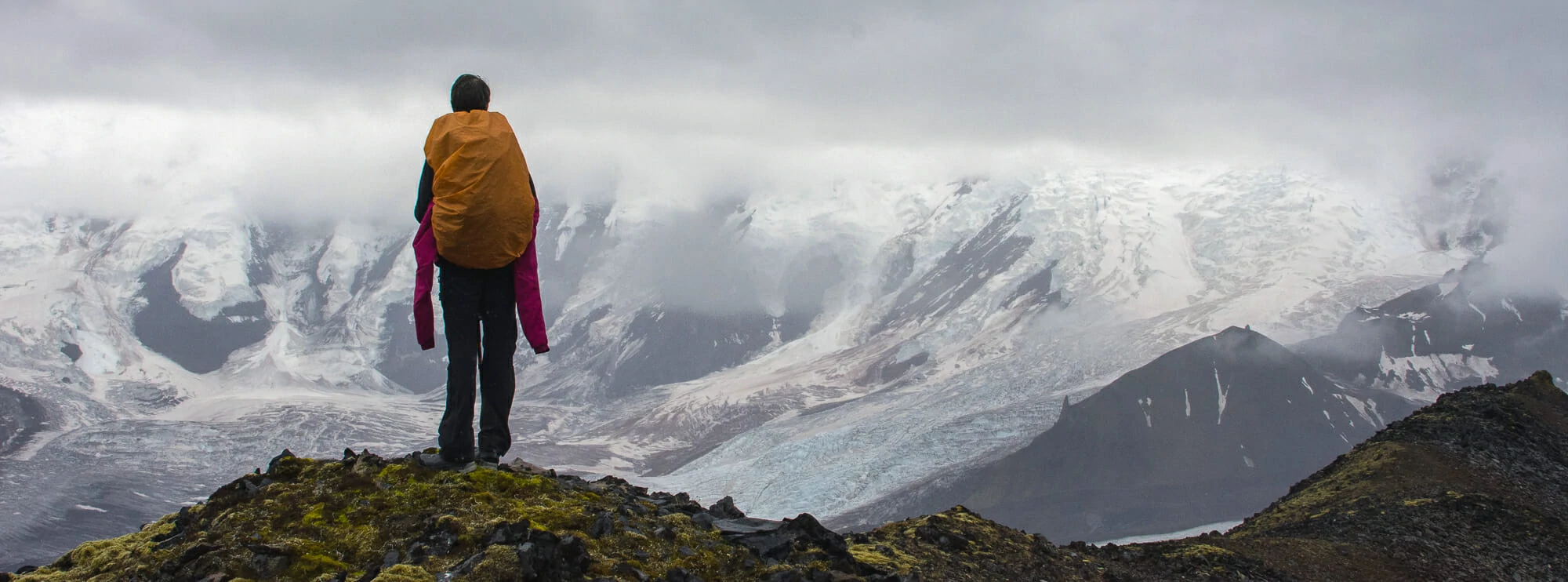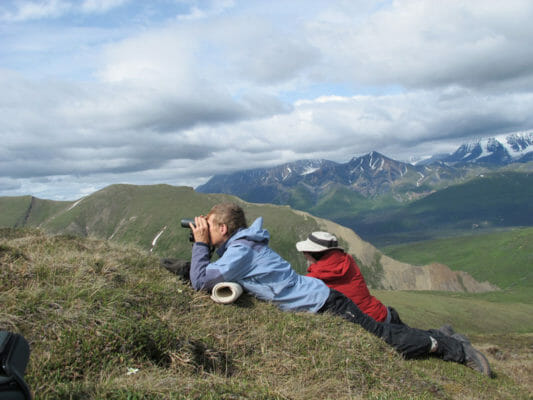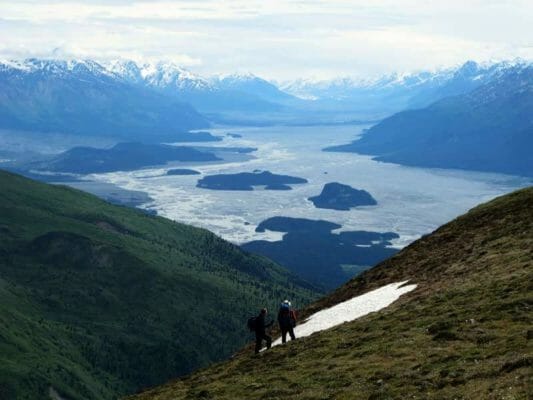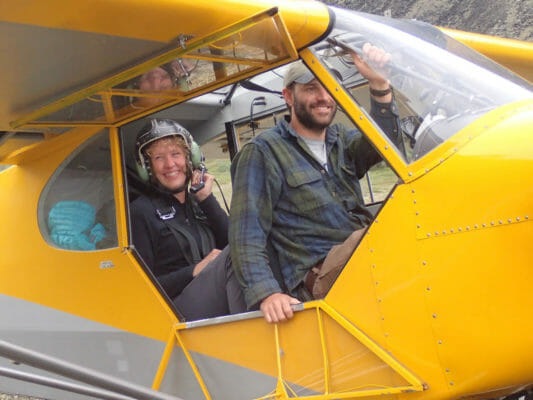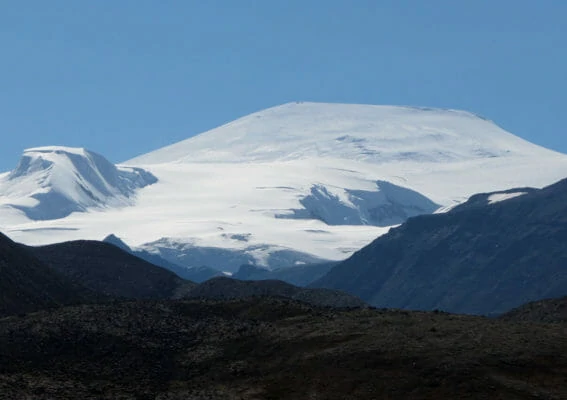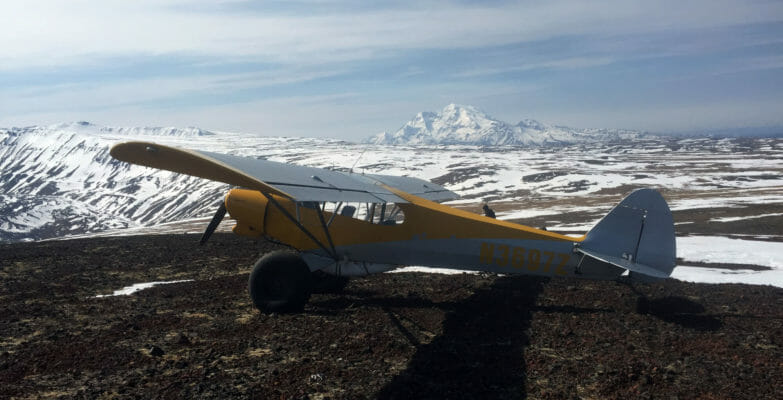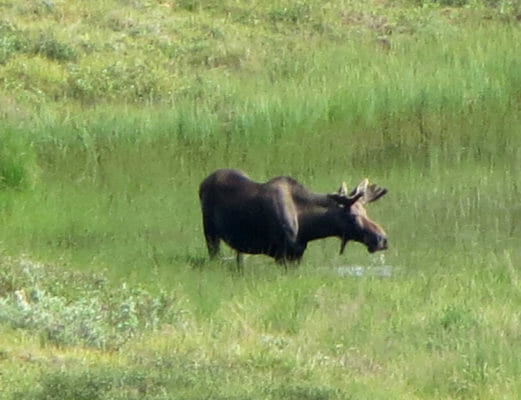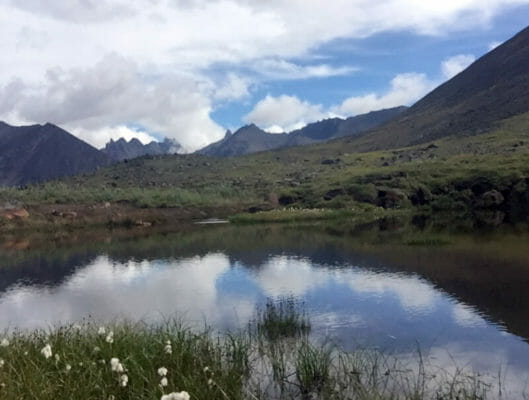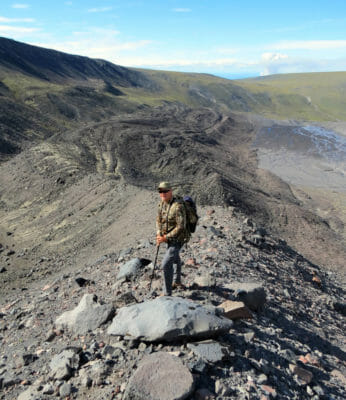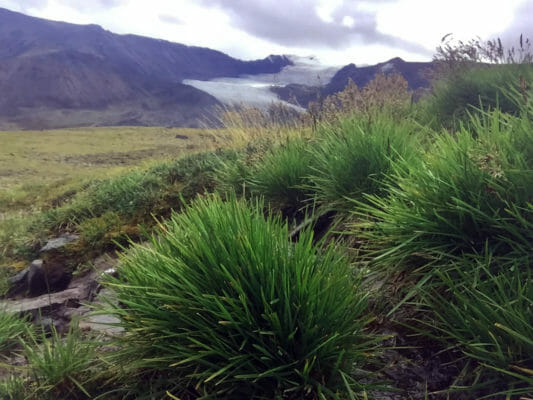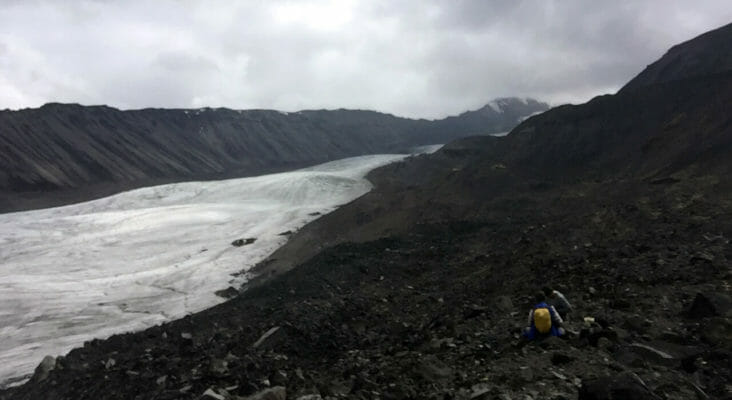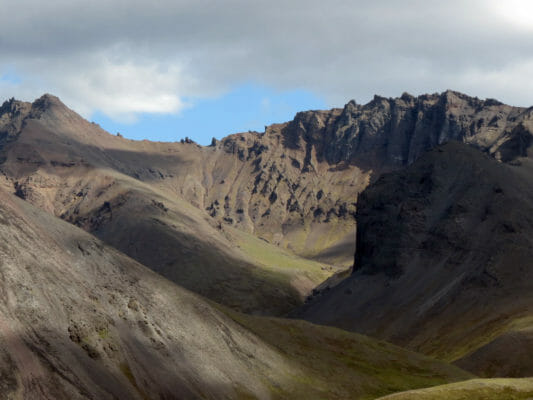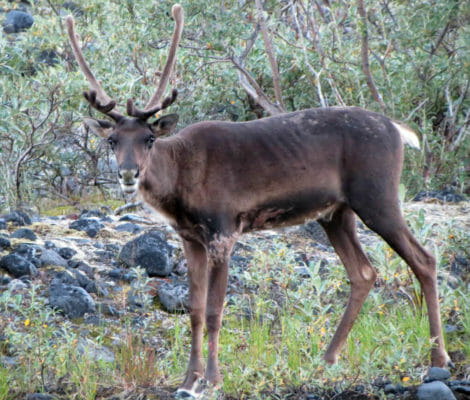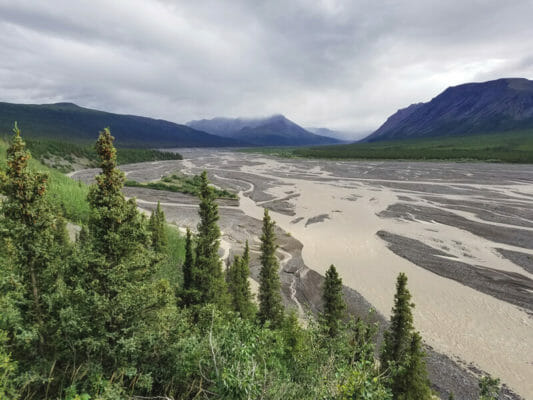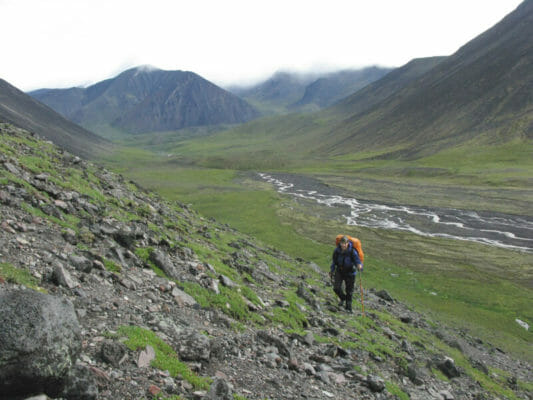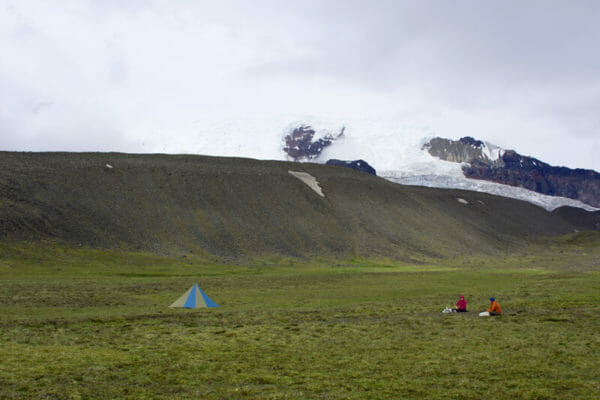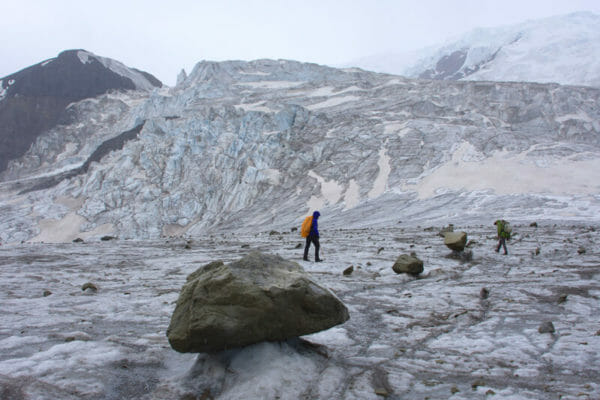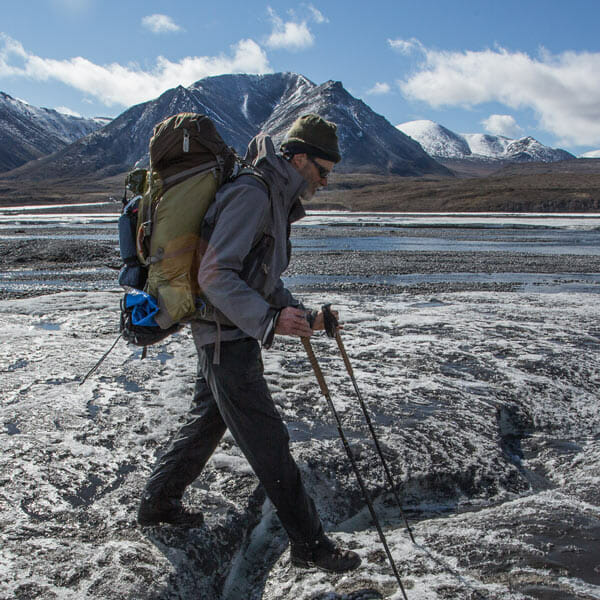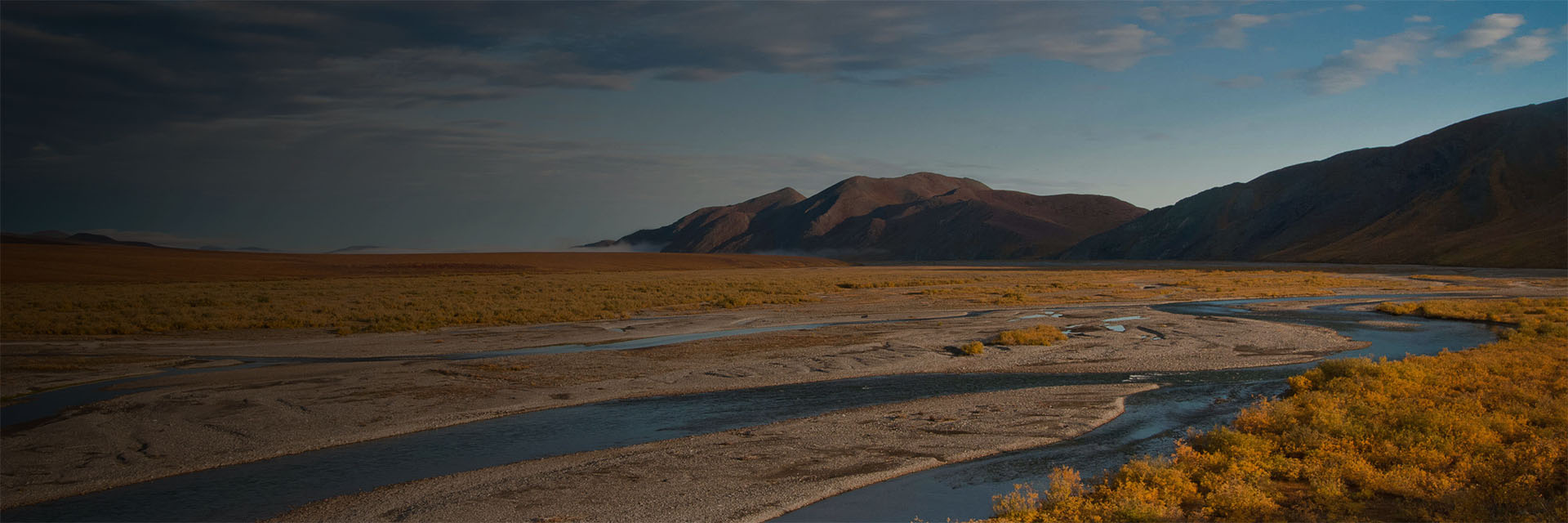Last updated: December 7, 2021
Itinerary
What follows is a general flow of events. Expect the unexpected and prepare to be flexible.
Day 0
Meet your guide at 4 pm for a Pre-trip meeting at the Arctic Wild World-headquarters in Fairbanks.
Day 1
We will pick you up early for the 4-1/2 hr drive to the Wrangells from Fairbanks. We’ll enjoy the scenery as we head southeast along the Richardson Highway to the town of Chistochina. Here, we meet our pilot who shuttles us into the mountains one at a time. Once the hum of the propeller fades into the distance and the quiet of the mountains descends we are on our own. The weather and your desires will dictate the pace of the trip, but the drop-off location is so spectacular it warrants a bit of time to relish the beauty.
Day 2
When ready, you’ll negotiate the glacial moraine and head towards Capital Mountain where Dall Sheep graze high on the green slopes. Then its up and over the first 1,000 ft pass before finding a way to down to Boulder Glacier. The creek crossing below the glacier may be a significant obstacle if the weather is warm and crossing early the next day is prudent.
Day 3 - 5
Once across Boulder Creek and Sheep Creek, the walking gets even better. There will be time to explore near the glaciers and to scan for wildlife on the tundra. Near the ice large cobbles and loose rocks slow progress but once up on the volcanic plateaus, full strides are possible and the vistas are impressive.
Each night we’ll camp near a small creek or find springs coming out of the rocks.
Day 6
Descend from the plateau into the Sanford River Valley. Here we encounter trees for the first time and the broad flood-plain of the powerful Sanford River. Once we bush-whack down to the gravels, we work our way upstream to the glacier at the valley head. Dark cliffs, green forests and grey water make a striking landscape for the last day of the hike.
Day 7
One last walk to the river, one last scan for sheep above camp and it is time to pack-up and fly back to Chistochina where our vehicle waits. If the weather cooperates we can be back in Fairbanks in the evening, ready for the next adventure.




